Mapping the Invisible
There are moments when the tools we hold become more than mere instruments, more than objects, but are actual bridges between mind and world, the seen and unseen. In the swing of a Universal Pendulum—a sphere methodically etched, part geometry, part enigma—you find vibrational radiesthesia: a crossroads where tradition embraces open-minded experimentalism. This is an invitation to curiosity, emerging from the rich French lineage of dowsing.
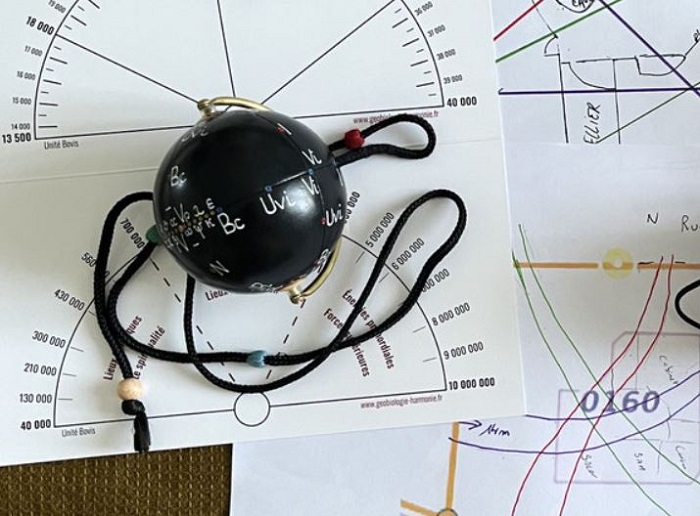
Pendulum as Portal: Form, Function, and Origin
Picture this: A sphere of five or six centimeters diameter, suspended from a brass arc, and sliced into imagined hemispheres—at its core a mysterious battery of hemispheres, its surface a silent map. What seems like ornamentation is, in fact, intention made physical. The lines and text marked into the surface are precise and serve a specific purpose, enabling the pendulum to be tuned into various energetic “colour” frequencies. The Universal Pendulum rose from the collective experimentation of Chaumery, de Belizal, and Morel in 1930s France, a time when science and parapsychology still intersected freely.
Their design wasn’t arbitrary: it incorporated metal hemispheres arranged with geometrical precision, with equator and meridians marking out pathways to align for subtle energies. The brass arc wasn’t for show—it was a bridge to conductivity, amplifying response and guiding motion. Even the direction and manner of holding the cord mattered—shift your grip, and you shift the realm of energy you’re tuning into: electromagnetic, magnetic, or electric.
But why bother? Because these inventors—like many before and after—intuitively sensed that everything, from a sprig of rosemary to the memory in a photograph, vibrates with its own energetic signature. And these vibrations, though elusive to the eye, might be sensed and even influenced through the right form.
Vibrational Radiesthesia
Enter radiesthesia: At its core, this is a discipline that treats energy as vibration and existence as a web of continual resonance. The pendulum is the dowsing practitioner’s scalpel, clock, and compass, used not just to locate a lost object or a hidden water source, but to read the hue of the subtle energy field, the “colour” of an organ’s vitality, or even the harmonics of memory or emotion.
In this world view, the colour green, for example, is not simply pigment but presence, a note in the ongoing chord of existence. Radiesthesia, as practiced by the French school, postulates that everything broadcasts its own “colour,” and these colors betray the health, history, and harmony of the source. The dowser, then, is both observer and participant: through focus and intent, their pendulum does not just register but also interacts with those vibrations.
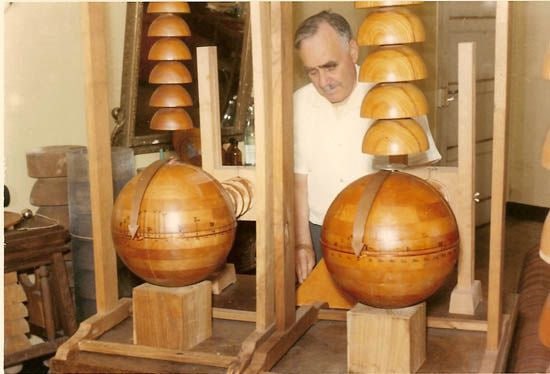
And these vibrations aren’t limited to the electromagnetic spectrum. Chaumery and de Belizal’s so-called microvibratory physics proposed a finer set of frequencies, beyond what our electronics—or even most of our language—can touch. But human intuition, coupled with the right tools, might bridge that gap.
The Practice
For all their mystery, both the Universal Pendulum and vibrational radiesthesia remain unpretentious in their mechanics. No electronics, just mass and motion, seemingly simple but deeply nuanced. The practitioner must learn to observe—not just the swinging pendulum but the subtle fluctuations in their own state of consciousness. This is both practice and calibration, each session a tuning of both tool and self.
And yet the dual nature of this practice can’t be ignored. The same frequencies that nurture can disrupt; tools that heal may harm if wielded recklessly or without clarity. For decades, pendulums like these were closely guarded, their range and sensitivity both asset and risk. Responsibility is essential in this practice—it’s a necessity.
Caution is obviously vital. The Universal Pendulum continues to emit energy or vibration even when it’s not being used. It is strongly recommended to store the pendulum in its positive green setting, rather than negative green which possesses a strong mummifying and drying vibration.
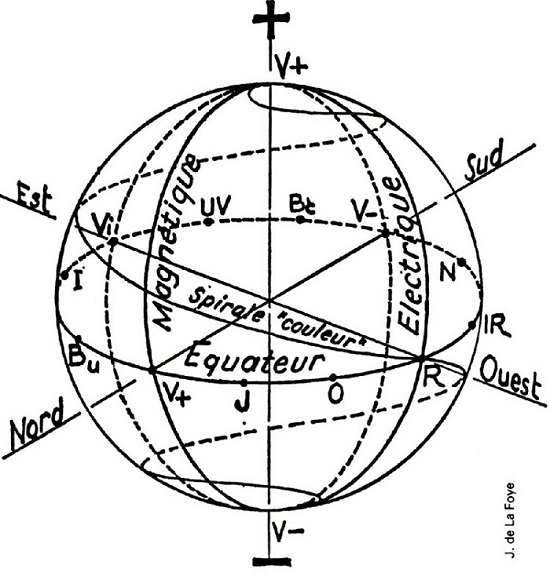
Symbols, Colours, and the Language of Energy
Symbols are the language of radiesthesia: charts, diagrams, and archetypal colors serve as a lexicon to the subtle world. Think of these as maps and keys—interfaces bridging the visible and invisible. But unlike a mere metaphor, in this discipline color is data, symbol is access. Reading a pendulum’s movement as it passes over a “colour” or symbol isn’t guesswork; it’s a matter of trained intuition, of letting resonance become language.
Not all practitioners agree on the translation. One dowser’s anemic yellow may be another’s golden radiance. Consistency across operators is rare; but meaning arises not from consensus, but from authenticity of practice. The pendulum asks that you meet it halfway. Surrender certainty, sharpen intent, and see what emerges from the interplay of tool, user, and inquiry.
Radiesthesic Colours
To move from possibility into precision, vibrational radiesthesia incorporates a systematized colour scale, each hue corresponding to a unique vibrational frequency that can be detected and invoked by a pendulum or other radiesthesic tool.
- In radiesthesia, colour frequency is not an abstract or merely visual attribute; each “radiesthetic color” is mapped to a specific energetic bandwidth, independent of the subjective shifts seen in auras or intuitive colour reading. For example, while an intuitive or “auric” colour could shift from blue to green depending on the mood or state, the radiesthetic blue or green etc. correlate to precisely determined vibrational states that remain stable regardless of content.
- The standard tradition recognizes twelve principal radiesthesic colors, and when their electric and magnetic polarities are taken into account, the system expands to twenty-four discrete reference points. (However, some traditions include “subtle” intermediate blends such as rose, between red and orange, for example.)
- Practically, these radiesthesic colors include:
· Red
· Orange
· Yellow
· Green (with variants of ‘Negative Green’ and ‘Positive Green’)
· Blue (including distinctions between light and dark)
· Indigo
· Violet
· White
· Black
· Ultraviolet
· Infrared
· ‘Invisible’ or musical notes (in some systems).
Each color frequency is discerned using dowsing charts, precisely calibrated pendulums, the Universal Pendulum or other geometric tools.
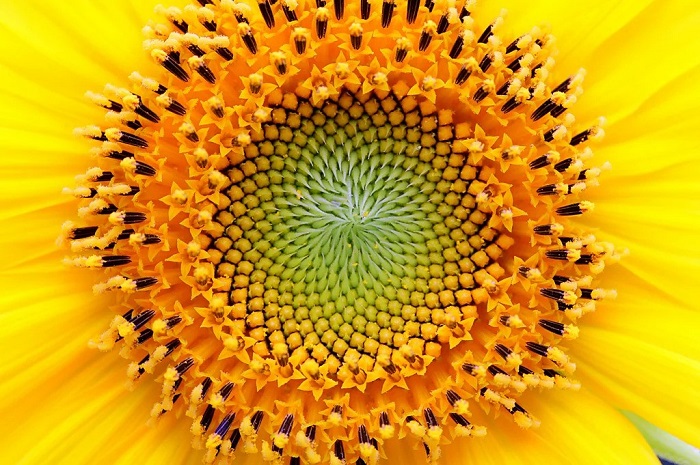
- Importantly, measurements are not arbitrary: The energetic frequency behind each radiesthesic colour is understood as a qualitative force that can affect the human nervous system and subtle fields much as a musical note elicits a predictable vibrational response in an instrument. This technical approach makes radiesthesia especially suited for diagnosis and targeted healing, allowing practitioners to “input” or “extract” precise energetic frequencies to correct imbalances.
- The distinction between radiesthesic and auric (intuitive) colors is critical: Where auric work is dynamic and interpretive, radiesthesic color work is repeatable, calibrated, and meant to provide standardized, actionable information for physical, psychological, or spatial energetic treatments.
Sacred Geometry and Energy
Venturing now deeper, the landscape of subtle energy is not a random field, but a patterned lattice—sacred geometry—forms that echo and repeat through nature, consciousness, and the universe itself. These next four sections enable us to peer into this latticework, to recognize the architecture behind the mystery.
-
An Ancient Science of Patterns
Sacred geometry announces itself as the ancient, ongoing science of patterns, where numbers and forms are not abstractions but living essences, informing both the substance and the scaffolding of existence and experience. Long before our current era of computer codes and quantum logic, sages recognized geometry as the primordial language. They traced the same cosmic spirals and ratios—the golden mean, the Fibonacci series, the flower of life—in the structure of leaves, the branching of rivers, the movement of galaxies, and even in the weaving of cultures.
To engage with sacred geometry is to step into a world where order and meaning are not imposed by the observer but are intrinsic to existence, waiting to be revealed with the right instrument or the right gaze. The classroom of nature is open to anyone who will look with right intent.
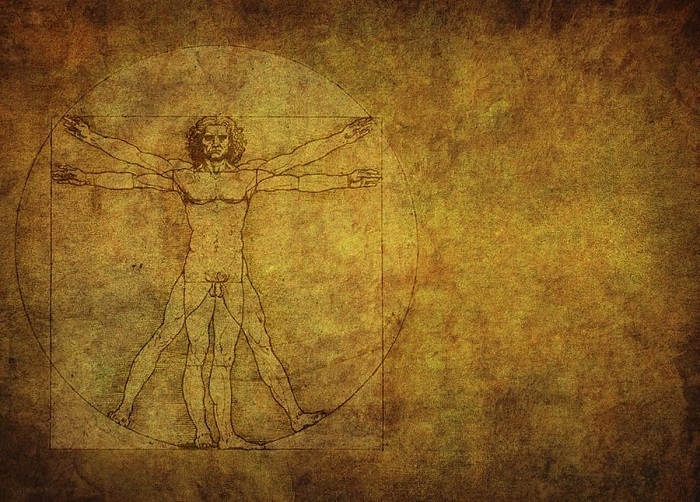
-
The Energy Behind the Form
But in this context, geometry is no sterile abstraction. It is animated by energy, the life force in turn animated by shape and pattern. Here, “energy” encompasses everything from measurable electromagnetic fields to the “chi” (qi) of Eastern traditions, to the “etheric” currents spoken of in mystical texts. Sacred geometry is the dance floor, with energy as the dancer.
The ancients believed that geometric forms are not just representations of energy, but its vessels and generators. Stones aligned, pyramids erected, mandalas contemplated: all harnessing, amplifying, or pacifying the subtle flows. The design and proportion of forms become technology.
-
The Subtle Body and Fields
Layered over the physical reality is the subtle: Energetic fields both nested within and extending beyond matter. Many traditions speak of these layers; for example the aura of esoteric Christianity, the chakras and nadis of Indian thought, and the meridians of Chinese medicine. Modern research in biophysics and psychology sometimes gropes for parallel terms: morphic fields, informational patterns, even the so-called “biofield.”
The point is not technology but the tapestry. Energy organizes itself through form, and form channels energy. The Universal Pendulum, vibrational radiesthesia, and sacred symbols all participate as instruments for tuning and attuning to these subtle fields. It is in this invisible layer that the practitioner operates—readjusting, diagnosing, restoring, sometimes by intent alone.
-
Geometry as a Bridge
Sacred geometry, then, is bridge and transmitter. Just as a well-struck tuning fork sets another in motion at the same frequency, so too do geometric symbols, when charged with intention, set up “resonance” in the fields of living beings and spaces. Altars, cathedrals, stone circles, labyrinths: all can be seen to be examples of environments engineered to amplify, modulate, or focus energy via form.
This is where universes meet. The triangle on the altar, the spiral in the shell, the dodecahedron in the microcosm become not symbols but portals: Through meditation, ritual, or even simple presence, the practitioner steps into the field and participates in its unfolding.
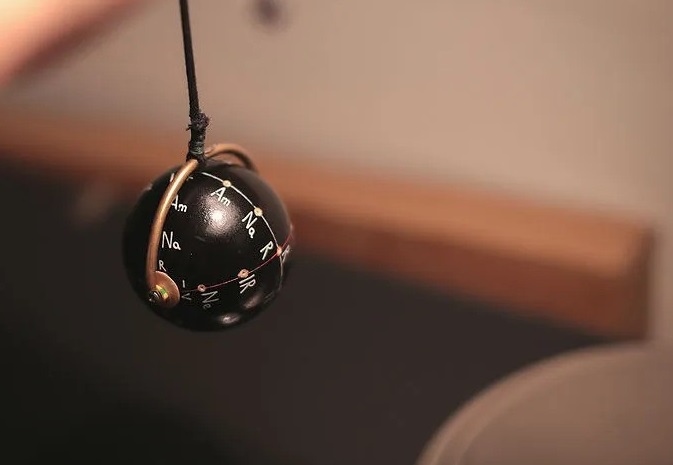
Entangling Worlds: The Synthesis
Recall the Universal Pendulum: A geometric object, a form designed to harness the resonance of energy fields, shaped by the same ancient science that mapped the Flower of Life onto the temple and cell membrane alike. The pendulum is both tool and exemplar, crafted in tribute to those invisible architectures that sacred geometry reveals.
And remember that we discussed vibrational radiesthesia, where the practitioner reads and sometimes rewrites the energetic scripts beneath the phenomena. With pendulum, chart, and an alert, curious mind, the dowser navigates a lattice at once ancient, timeless and personal.
The wisdom of sacred geometry deepens this narrative: The world is not random but resonant, not merely material but saturated with meaning. The pendulum and the chart, the spiral and the triangle, the color and the intention—all are invitations to enter this hidden order, to map its patterns, and to participate, perhaps, in its unfolding mystery.
Whether you explore with instrument or intuition, theory or practice, the proposition remains: reality is not a flat surface, but a resonant field patterned by intelligence, animated by energy, awaiting discovery by those willing to listen—and to observe with more than eyes.
You are welcome to participate in the conversation. Please leave a comment below.




Glad to see somebody talking about this subject. I find it fascinating. I have a universal pendulum, as well as a Turenne pendulum, and a virtual cone pendulum.
Thanks. I’ve known about the UP for some years, and now I’m about to buy one. The French have some interesting technology for sure.